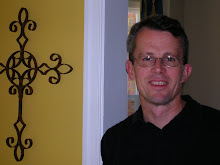Experiencing the Edinburgh Festival Fringe

The Fringe in Edinburgh, Scotland, is the largest arts festival in the world. It started in 1947, when six Scottish and two English theater companies showed up at The Edinburgh Festival uninvited, and decided to fend for themselves. The next year, their gatecrashing was described as "the fringe of the official festival," and the Fringe was born.
This month, over 2000 shows are being offered in venues throughout the city, from pubs to concert halls. There are children's shows, comedy, dance and physical theater, exhibitions, music concerts, musicals, opera, and theater. Some are free of charge, and most cost between 5 and 10 British pounds ($8.25 - $16.50). The most expensive tickets I purchased were for New Zealand comedian Rhys Darby, which were 15 pounds. Clearly, this is an entertainment bargain.
For a middle-aged man such as myself, part of the fun is walking The Royal Mile through the heart of Edinburgh, and being approached by beautiful young actresses anxious to talk about their shows and encourage me to attend. I can honestly say that this happens no where else in my life. And it works -- I went to shows every day, and my son Sam and I each saw about 20 over the course of the week.
In fairness, I also enjoy talking to the young men who approach me with flyers for their shows. Whether male or female, these performers are so enthusiastic, energetic, and earnest -- they believe in what they are doing, and are effective evangelists for their programs. Although they may not attract more than one person in 50 on the streets of Edinburgh, their passion is palpable. I want their excitement and authenticity for myself.
What would it mean for church members to talk about their congregations with this kind of commitment, hope, and hunger? I'm not suggesting we pass out flyers on the street, but instead start talking about the life of the church with some real passion. These young performers are completely invested in what they are doing, whether it is a hip-hop version of Macbeth or a musical presentation of Darwin's Origin of Species. When they speak to you, you want to check out their shows, and it is not just because they are young, attractive, and talented. It is because they have worked hard to develop their program and are passionate about what they are doing.
I saw no terrible performances throughout my week at the Fringe, although the biggest disappointment -- a musical version of The A-Team -- had one of the largest crowds. A reminder that popularity is not necessarily a sign of quality, in theaters and in churches.
The level of talent definitely varied from the Free Fringe shows to the headline performances, but every performer seemed to bring his or her best, regardless of audience size. That's a good lesson for me and my fellow preachers, easily discouraged by small turnout in worship.
Another lesson from the Fringe is that creativity is celebrated, and everyone seems to appreciate innovation. Actors lie down on the sidewalk to draw attention to their shows; dancers showcase their moves in portable stages set up along The Royal Mile; three "gaga heads" from Tokyo stand on traffic barriers in full body tights to advertise (you guessed it) The Body Tights Man Show. These performers walk the streets in outrageous costumes, selling themselves -- in a good way -- because they believe in what they are doing.
One night, Sam and I were standing in line for a show, and were approached by the songwriter for Axis of Awesome, a rock-comedy group, kind of like Spinal Tap. He gave us the pitch for his show, and we said that we already had tickets, which made both him and us feel good. The show turned out to be, well, awesome.
I feel like part of my job at age 49 is to encourage the younger generation. Sure, my family teases me about enjoying the attention of young actresses on the street. And yes, this may be the only place in the world where a middle-aged guy can have a lot of twenty-somethings show interest in him. But I like to talk with these performers about their shows, and then spot them on the street after a performance and compliment them. I am at peace with my age and my role, as an encourager. This is important both at the Fringe and in church life.
My family and I attended the Fringe in 2003, and have now experienced it in 2009. At a Mexican lunch in Edinburgh, we made a decision to return to the Fringe every six years as a family. We'll visit next in 2015, when Sam in out of college and Sadie is finishing her first job. Then in 2021, perhaps with some grandchildren for the children's shows. Then in 2027, when I'm 67.
Will that be the last one? I hope not. The Fringe offers much food for thought about passion and performance, and it reminds me to think in creative ways about communicating through speech, music, and movement.


